No Symbols, No Excuses: Painting the Processed Body
What if the body wasn’t a subject, but a surface?
Lisa Klinger’s paintings don’t deal in metaphors—they operate like machines.
Her work refuses sentiment—and that’s what makes it honest
With a razor-sharp gaze shaped by her autistic perception, the German artist approaches the human body the way an engineer might approach a product: with clarity, precision, and an awareness of how each part is designed to perform.

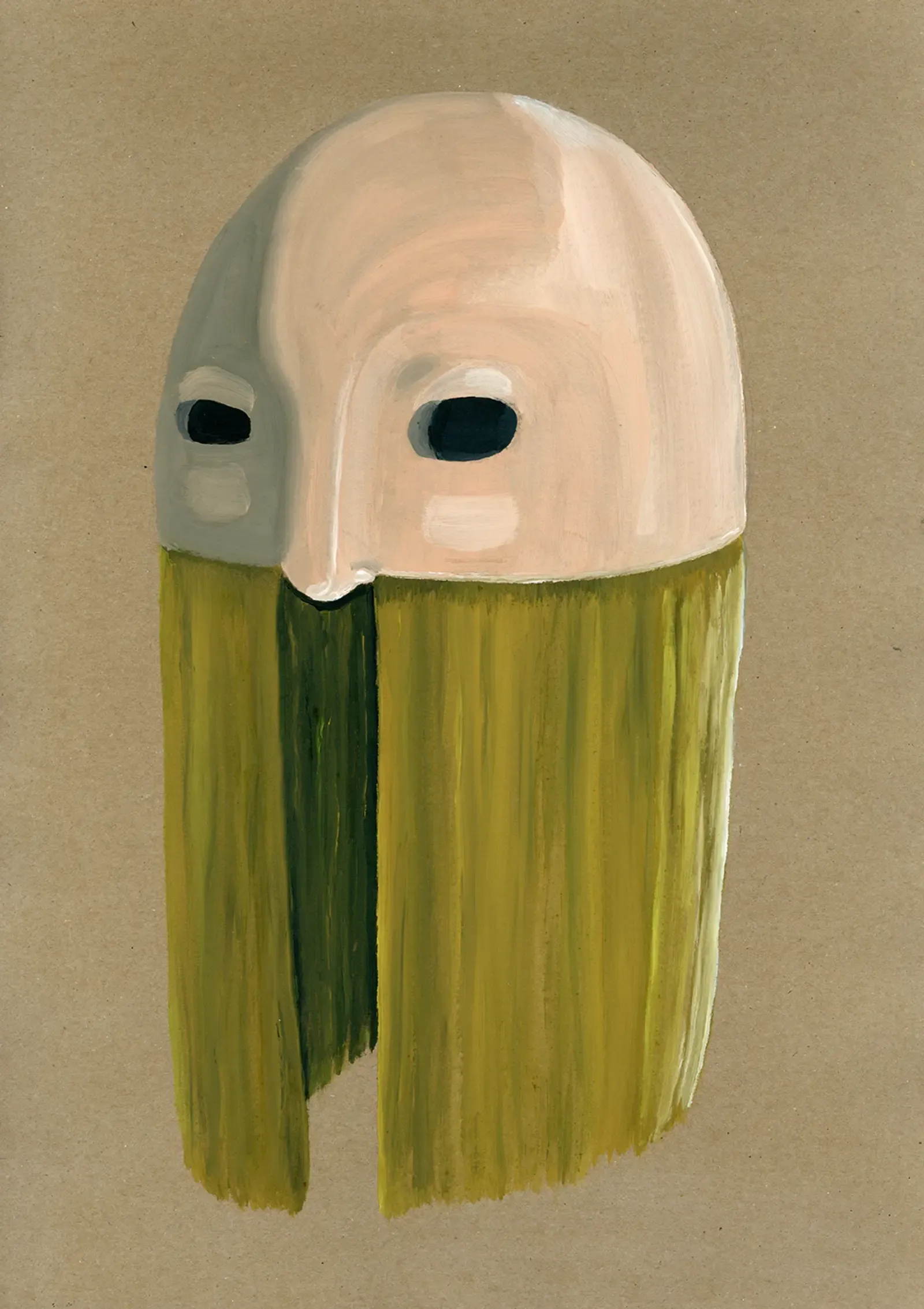
Lisa Klinger: (left) Oh so pretty, and the details are: 2025 / 21 x 29,7 cm (8.3 x 11.7") / oil on paper - (right) Helmet / 2025 / 29,7 x 42 cm (11.7 x 16.5") / oil on paper - Permission and Courtesy of the Artist
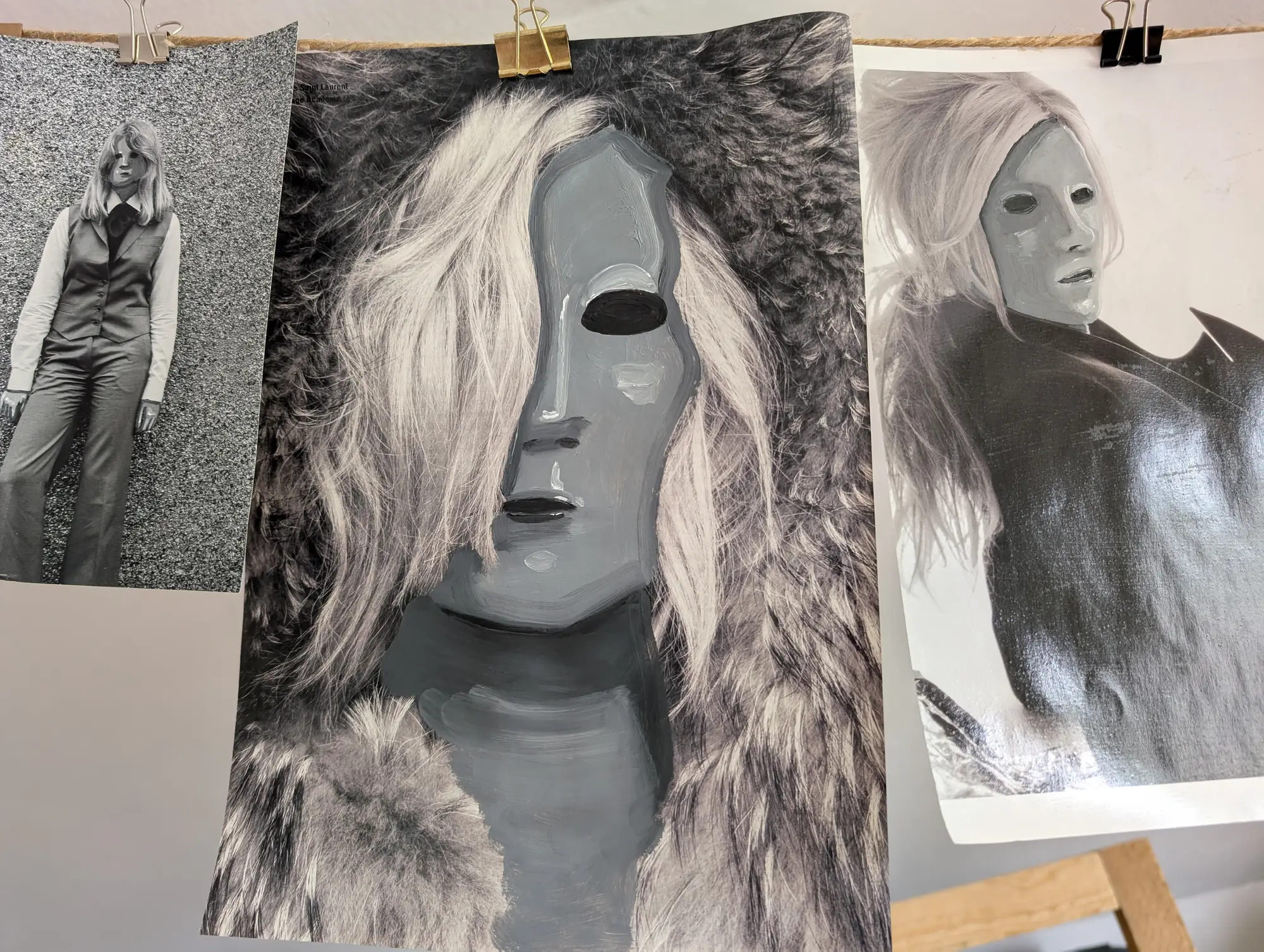
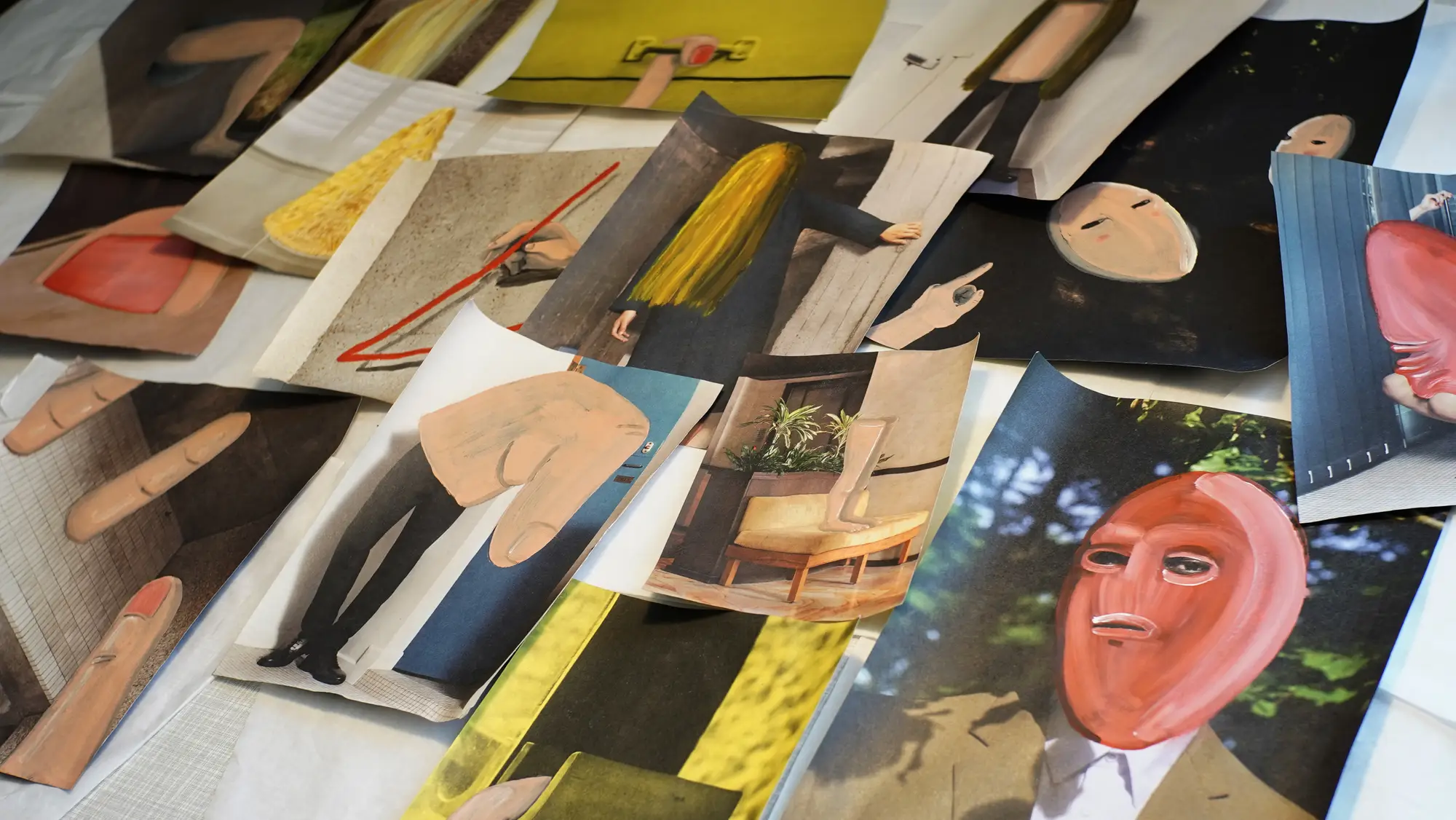
Based in Germany, Klinger’s practice unfolds through painting, but what she delivers is more diagnostic than expressive. She doesn't illustrate identity - she anatomizes it.
Using visual cues drawn from fetish culture, cosmetic gloss, and surgical aesthetics, she unravels how femininity, desire, and control are coded into the image itself. The result? Works that don’t look at you- they scan you.

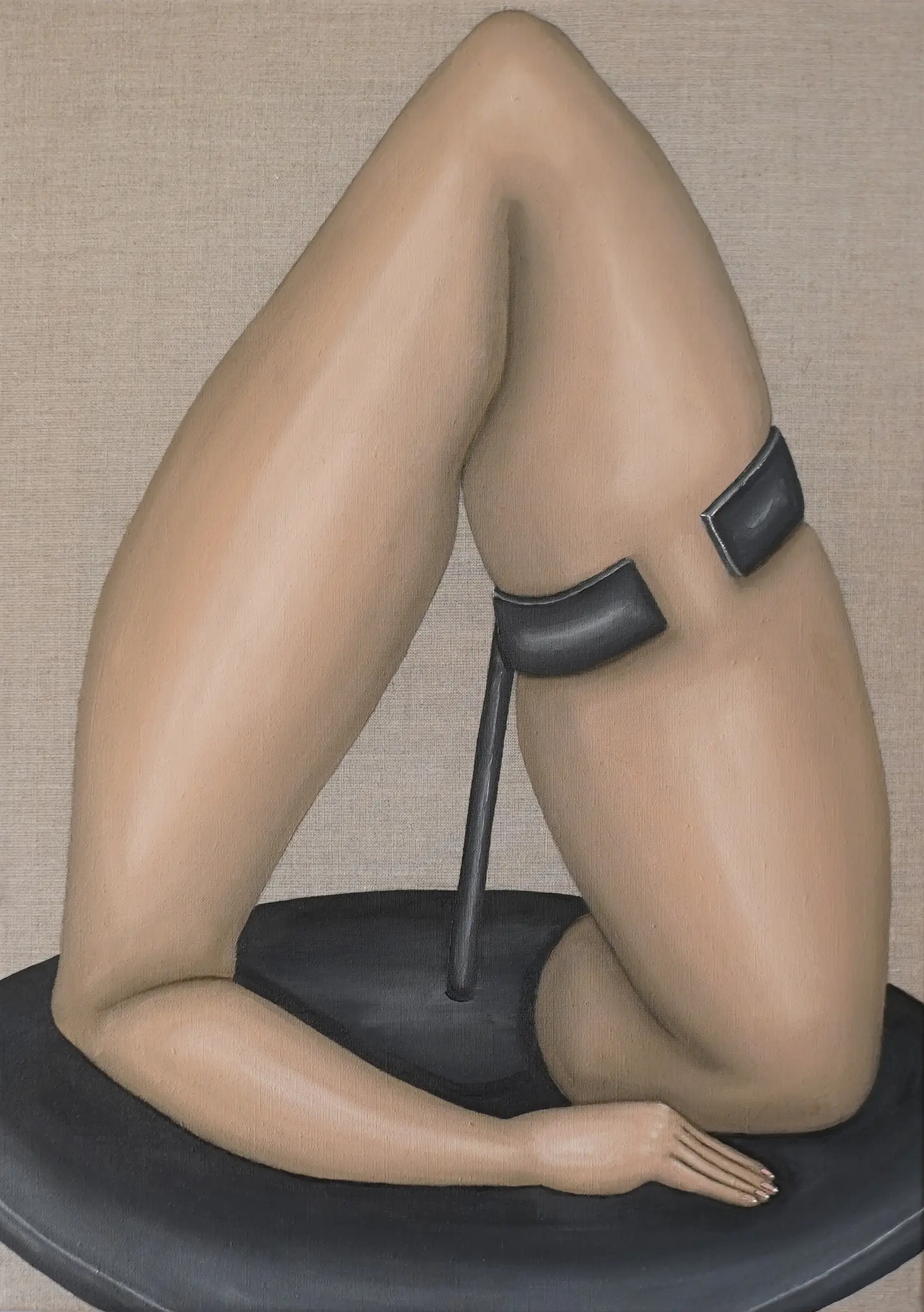
Lisa Klinger: (left) Extensions / 2025 / 50 x 70 cm (19.69" x 27.56") / oil on linen - (right) Exposure / 2025 / 50 x 70 cm (19.69" x 27.56") / oil on linen © Lisa Klinger 2025

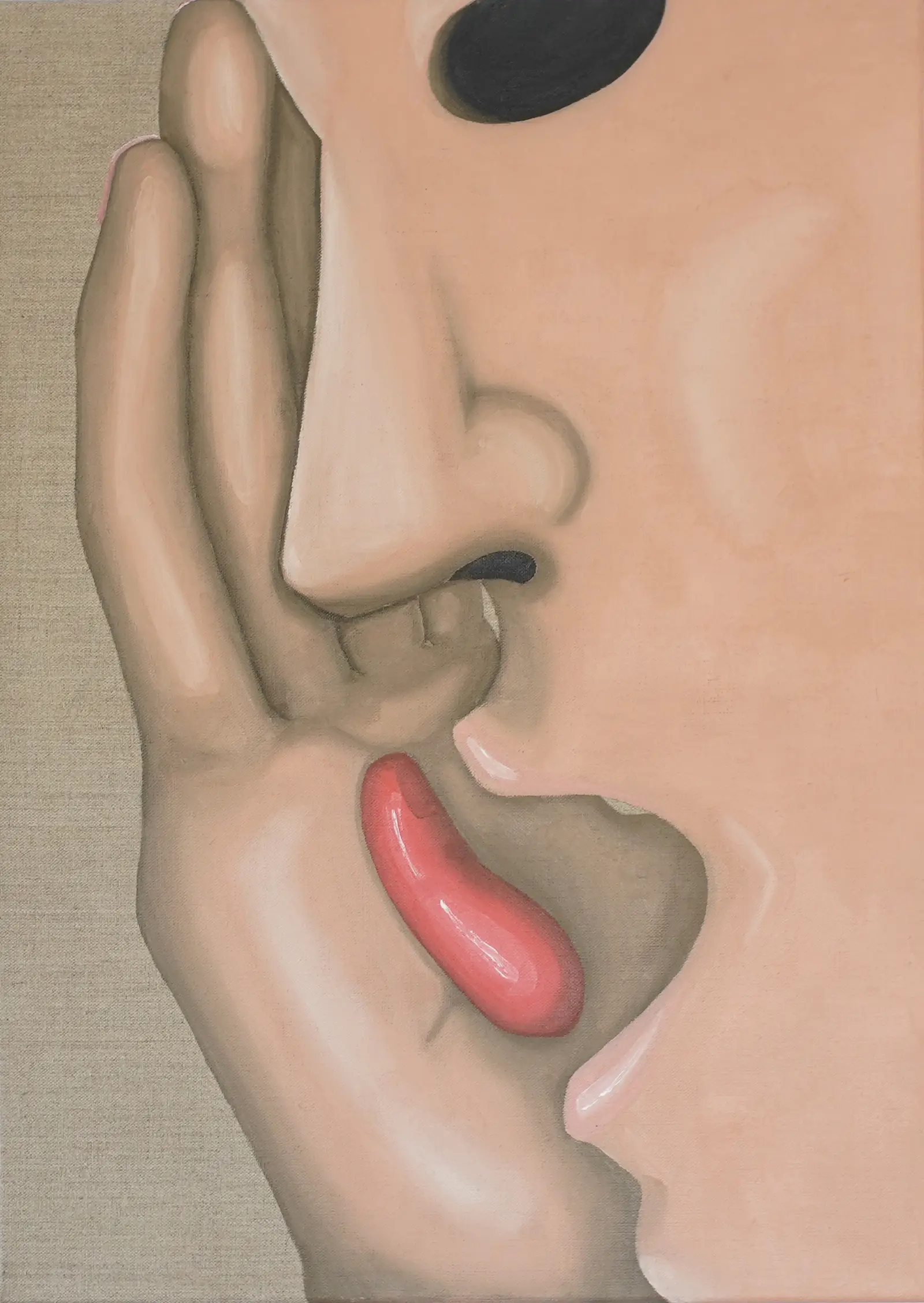
Lisa Klinger: (left) Unicorn / 2025 / 50 x 70 cm (19.69" x 27.56") / oil on linen She's a truly magical girl! (right)Expectations, and the details are: 2025 / 50 x 70 cm (19.69" x 27.56") / oil on linen © Lisa Klinger 2025

Lisa Klinger is a German painter whose work is as precise as it is provocative. Navigating the world through the lens of autism, she sees objects—and bodies—not as representations, but as systems.
Her background as a neurodivergent artist isn’t a side note; it’s a central vantage point, one that enables her to dismantle familiar visual codes with startling clarity.
Her medium is painting, but her focus lies in the constructed nature of the body: how it's posed, packaged, and perceived.

Themes of autonomy and heteronomy intersect with fetish culture, fragmented identity, and the visual economies of femininity. Klinger’s aesthetic isn’t expressive—it’s exacting.
Gloss, pinks, surgical edges—her images operate in the tense space between allure and dissection. They don’t depict. They expose.
Lisa Klinger: Skin as Contract, Beauty as Pressure Point
Lisa Klinger’s paintings don’t suggest. They deliver. A mouth pressed into a mechanical grin. A mask not worn, but fused.
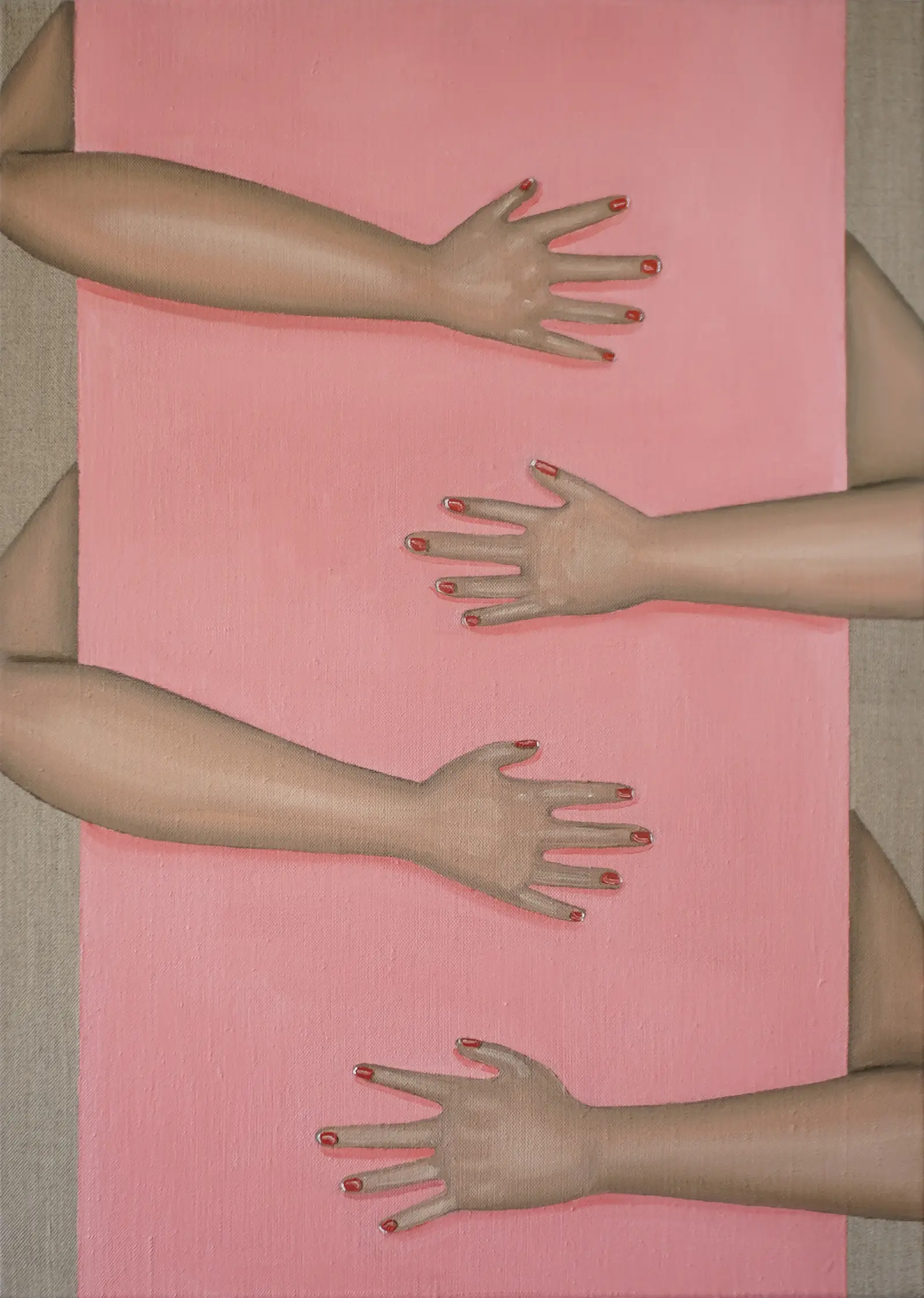
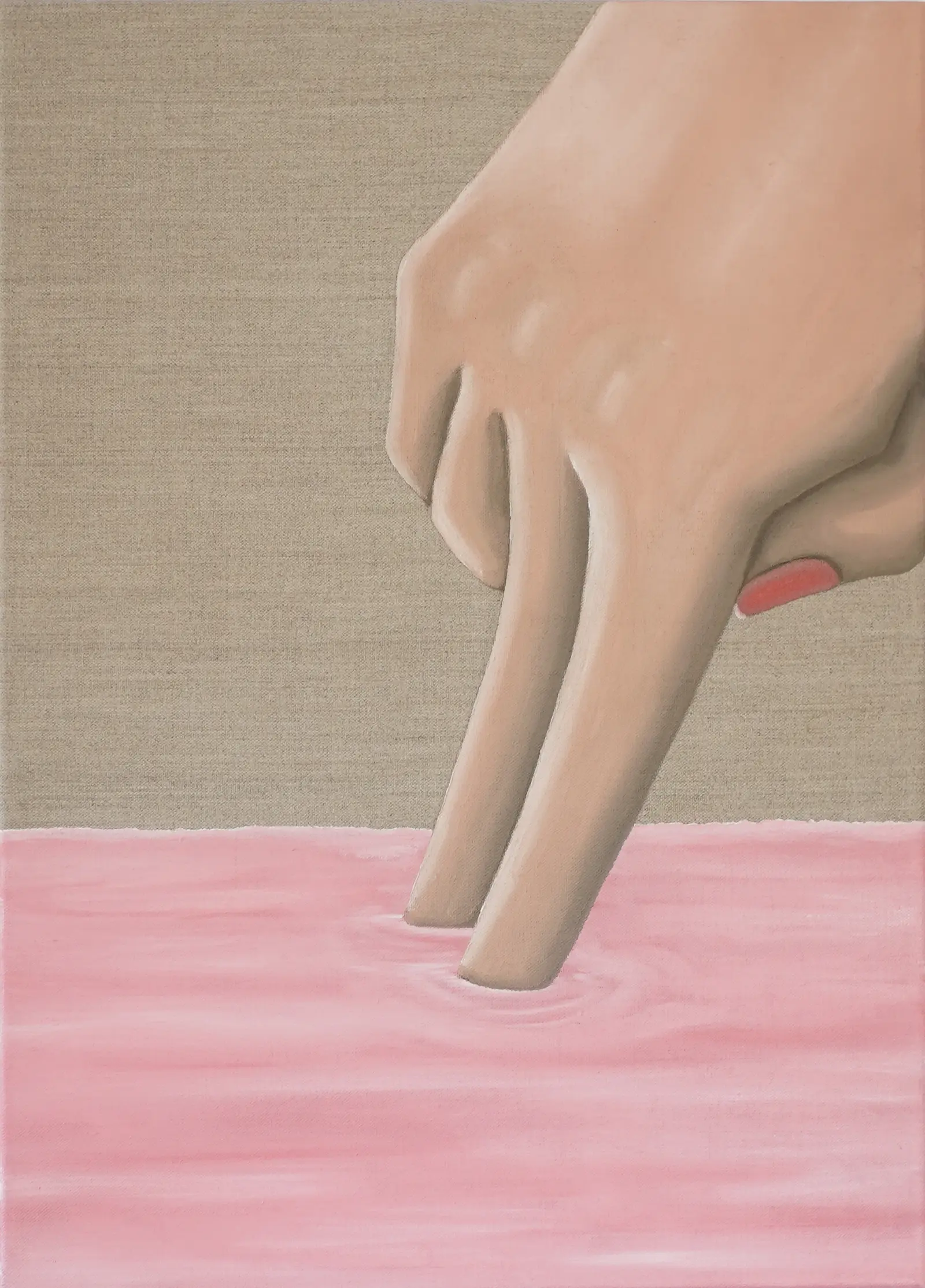
Lisa Klinger: (left) 💗 Pink / 2025 / 50 x 70 cm (19.69" x 27.56") / oil on linen -> (right) Sensation / 2025 / 50 x 70 cm (19.69" x 27.56") / oil on linen - © Lisa Klinger 2025
Pink gloss layered over soft tissue. These are not metaphors. They are statements. Her works render what the world demands of the body—compliance, exposure, repetition—with unnerving clarity.
Informed by her autistic lens, Klinger treats objects not as symbols but as agents. Her paintings reorganize flesh into designed surfaces. They show what it means to be viewed, evaluated, consumed.
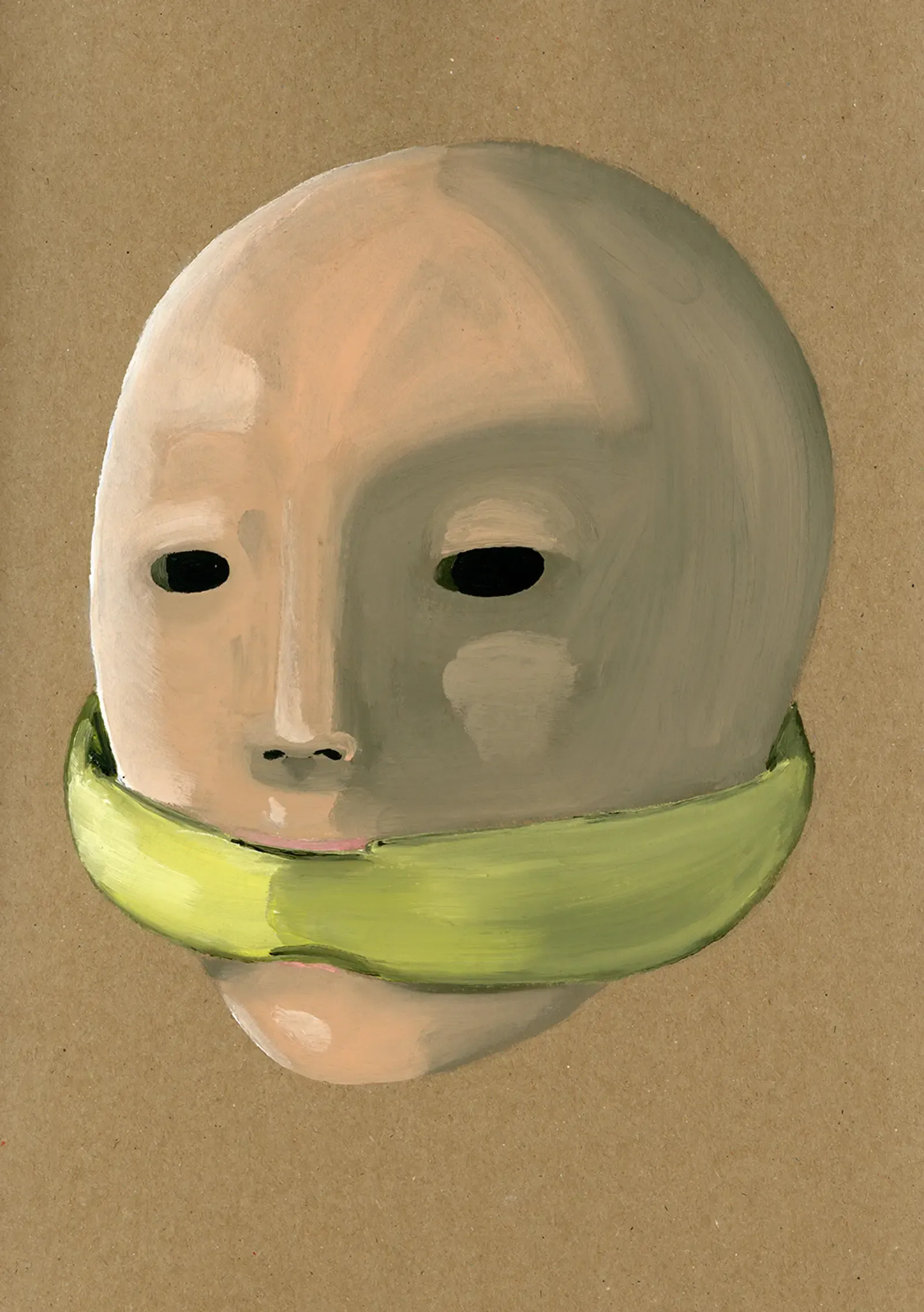

Lisa Klinger: (left) Bite / 2025 / 21 x 29,7 cm (8.3 x 11.7") / oil on paper - (right) Entity / 2025 / 29,7 x 42 cm / oil on paper Permission and courtesy of the artist
Bite captures a moment where pleasure and punishment collapse into each other. Commitment lays bare the binding contract of femininity—not as cliché, but as blunt reality. In Fashion, the gloved hand isn’t about elegance. It’s about control.
There’s no softness here, no dreamy distance. Even humor arrives with a sting. These aren’t surreal. They’re hyperreal—too real, even. A pink torso isn’t an idea. It’s the result of a system that names the body, reduces it, retouches it, reposts it.
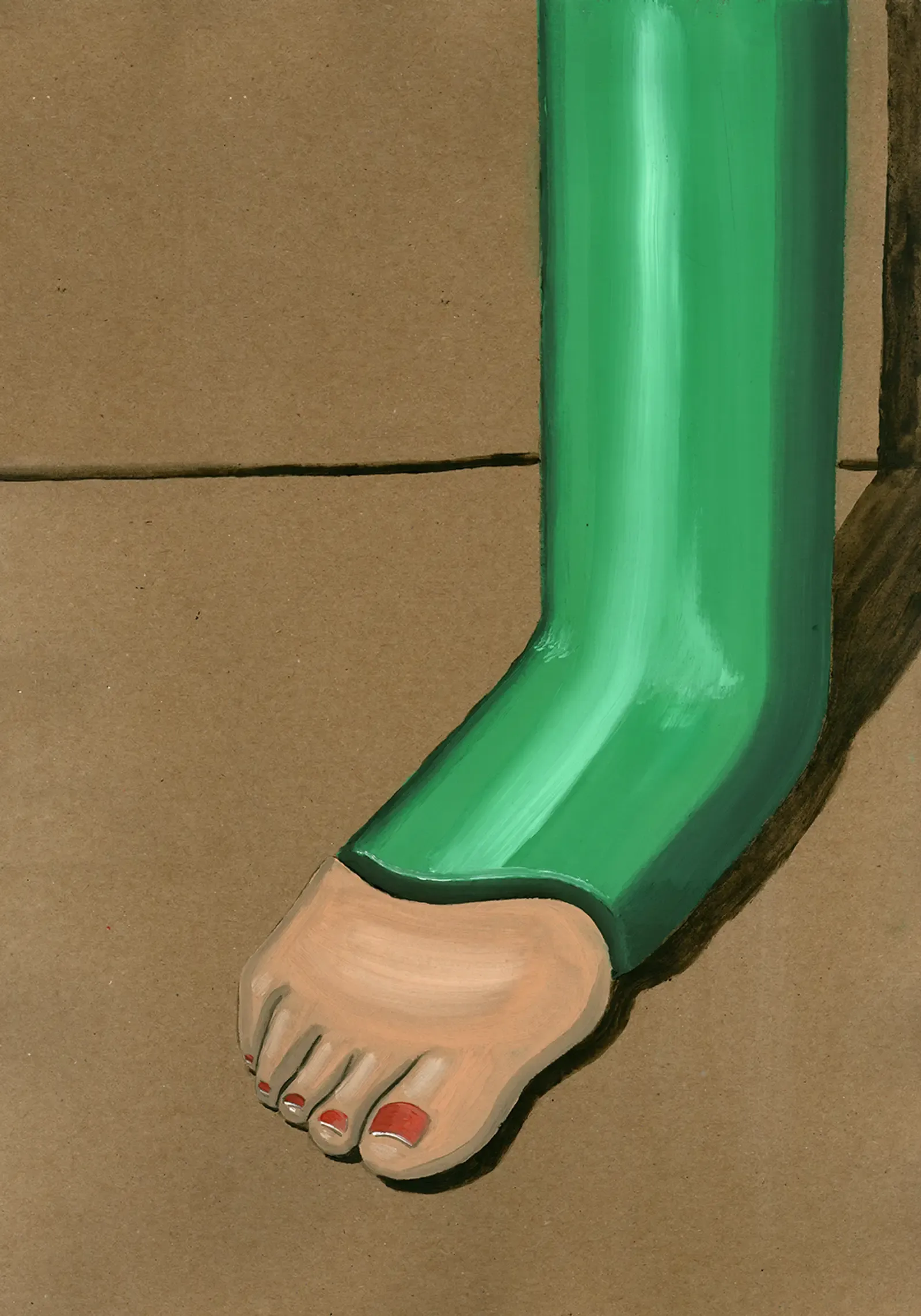

Lisa Klinger: (left) Perfect Fit / 2025 / 29,7 x 42 cm (11.7 x 16.5") / oil on paper - (right) Fashion / 2025 / 29,7 x 42 cm (11.7 x 16.5") / oil on paper - Permission and courtesy of the artist
Klinger doesn’t paint theory. She paints aftermath. What’s left after desire, branding, and medical objectification have taken their cut. Her work refuses sentiment. And yet, in its exacting surfaces and visual pressure points, it creates a deep unease—the kind that can only come from truth seen too clearly.
Key Themes
- Heteronomy vs. autonomy of the female body
- Fetishism and visual control
- Objecthood without metaphor
- Neurodivergent reading of bodies
- The body as interface, not identity
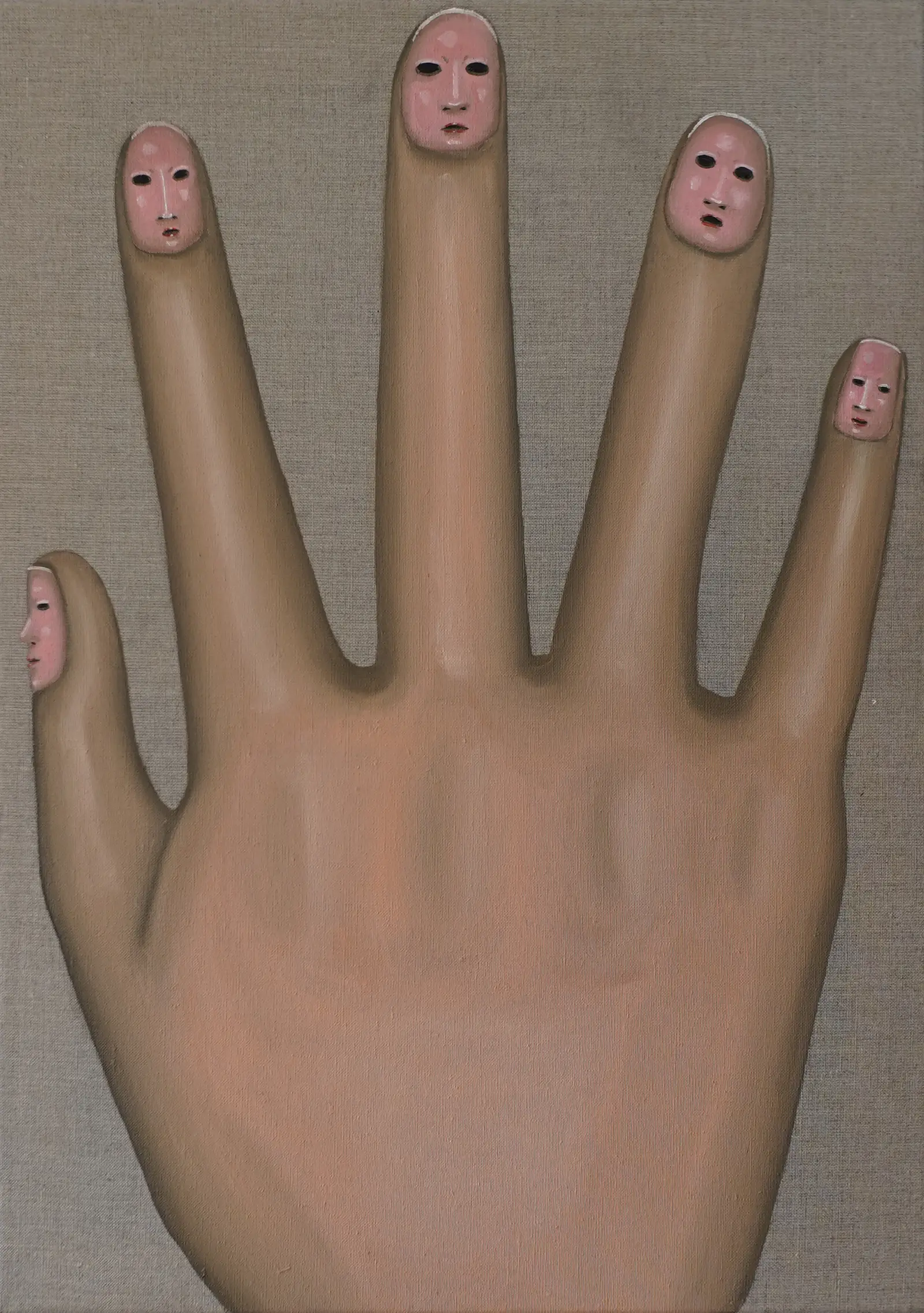
Notable Series / Visual Motifs
- Mechanically fixed faces
- Fragmented body parts rendered clinically
- Pink flesh, gloss, latex, surgical cleanliness
- Visual friction between elegance and brutality

Positioning in Contemporary Art
Lisa Klinger doesn’t follow the line of symbolic painting—she punctures it.
Positioned alongside practices that dissect systems of visibility (think Aleksandra Domanović or Heji Shin), her work shares a concern with image and infrastructure, body and machine.
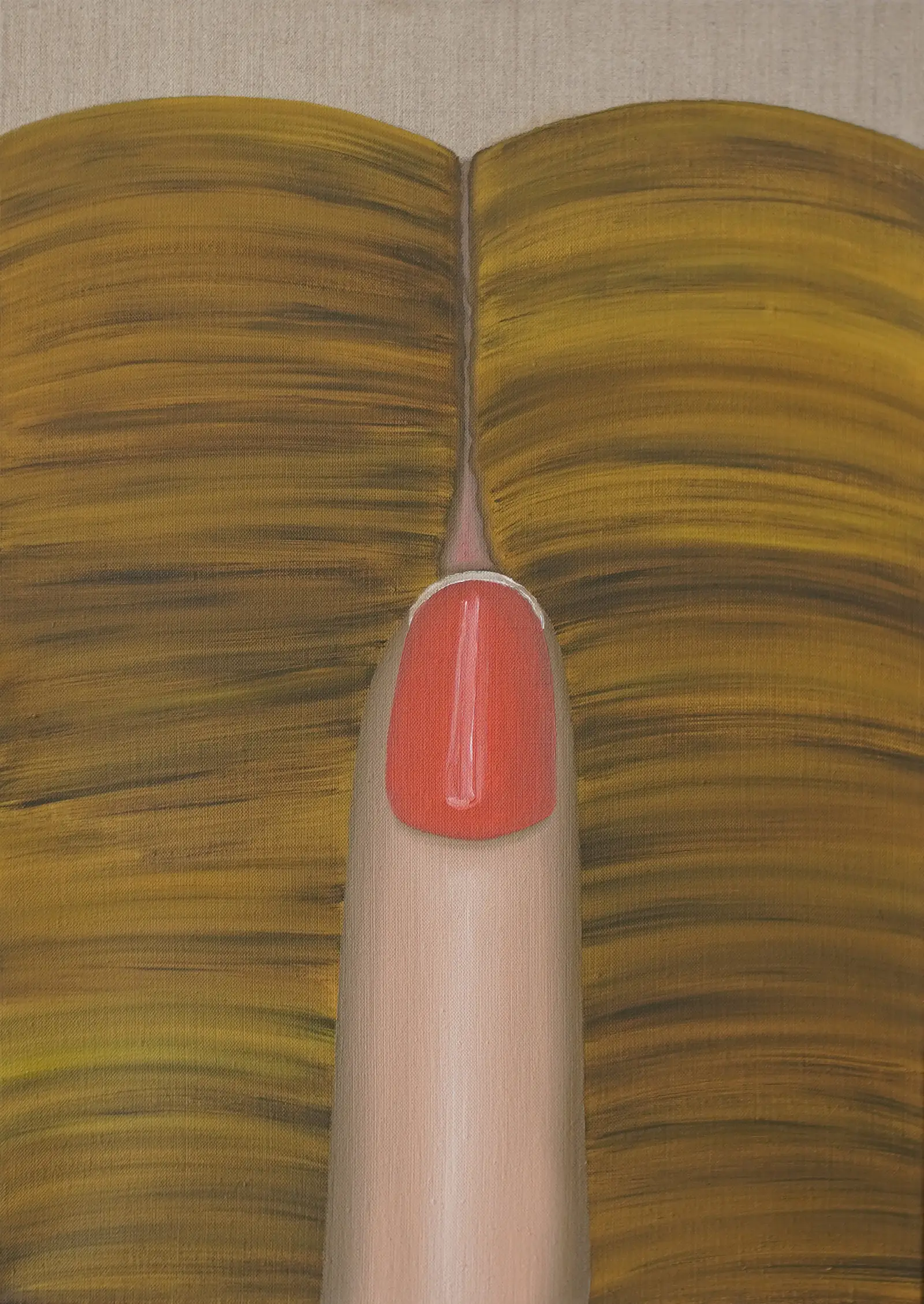
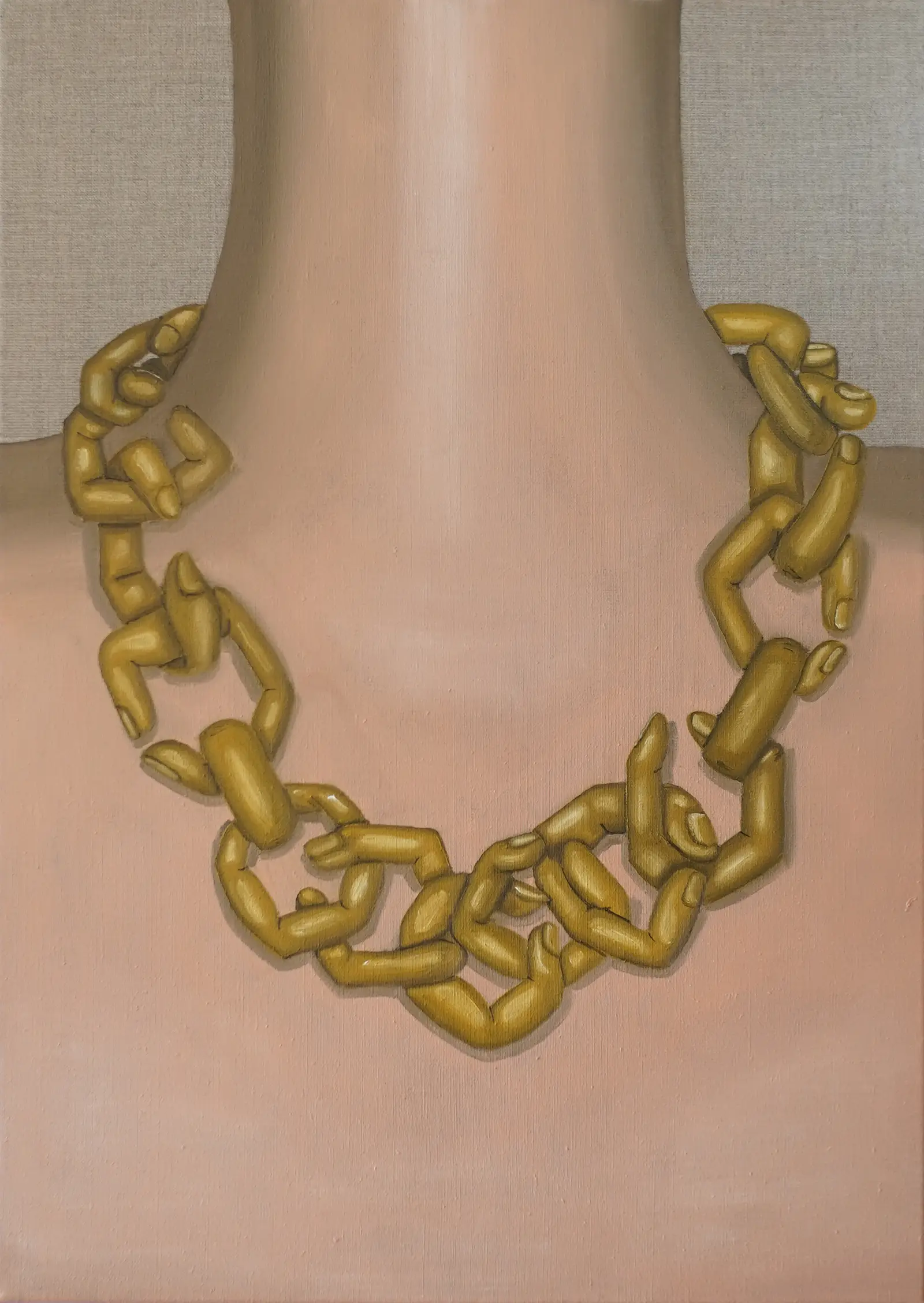
Lisa Klinger (left) Seam / 2025 / 50 x 70 cm (19.69“ x 27.56“) / oil on linen -> (right) old chain / 2025 / 50 x 70 cm (19.69" x 27.56") / oil on linen © Lisa Klinger 2025
But she does so with a focus that’s less about critique, more about exposure. Klinger’s art isn’t moral. It’s diagnostic.
Follow Lisa Klinger on Instagram. Her work doesn’t represent the body—it processes it.

Lisa Klinger Online
Portrait Image: 📸 Maximilian Reimann





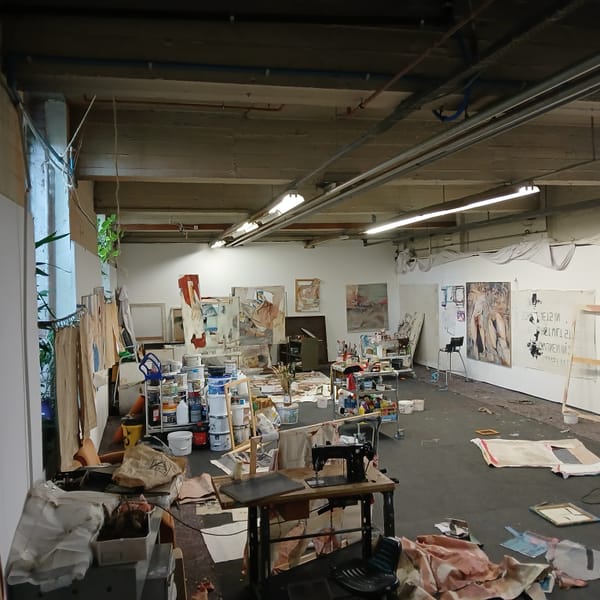





Member discussion